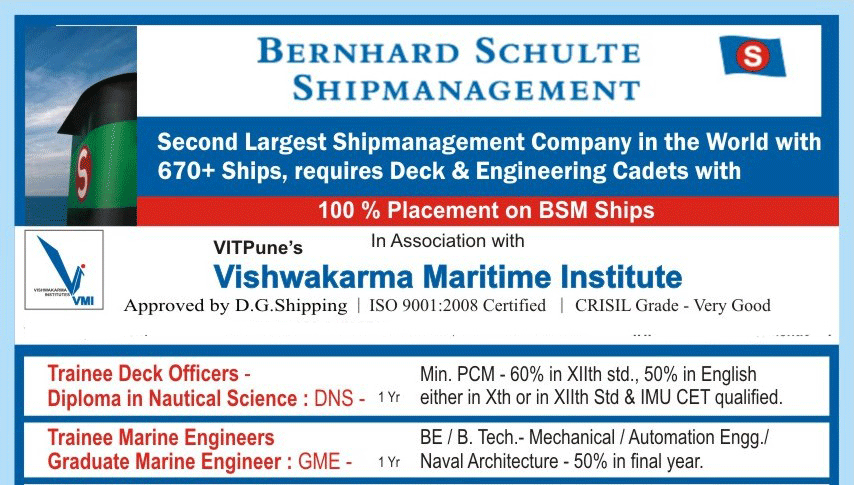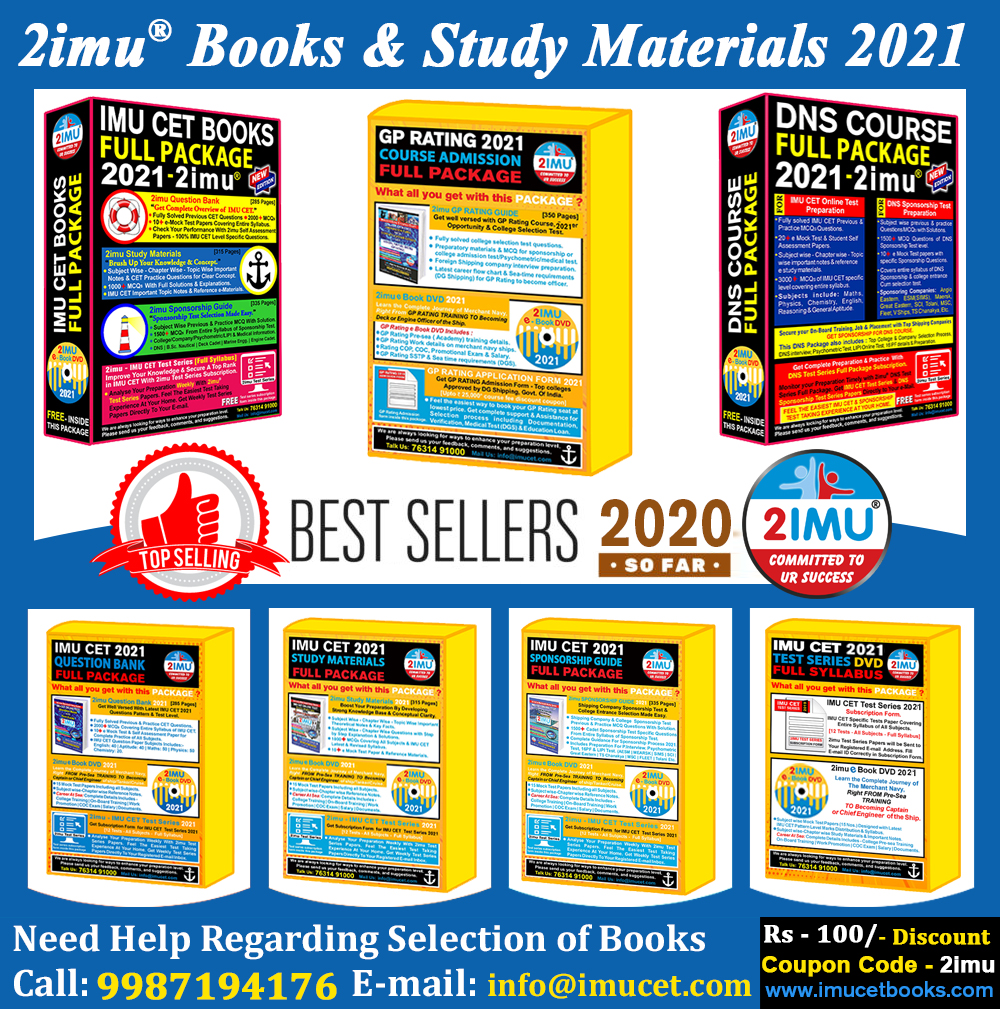- Merchant Navy Courses For 10th Pass, Click here
- Merchant Navy Courses after 12th, Click here
- Join Merchant Navy after Graduation, Click here
- Merchant Navy after BE/B-Tech, Click here.
- Merchant Navy after Diploma, Click here.
- Merchant Navy Jobs, Click here.
- Merchant Navy 2018 Entrance Exam, Click here.
- Merchant Navy 2018 application form, Click here.
- Merchant Navy Top Colleges 2018, Click here.
- Merchant Navy Courses 2018, Click here.
- IMU-CET Online Application form for July-2018, Click here.
- IMU-CET Entrance Exam Dates-2018,Click here.
- IMU-CET Entrance Exam Eligibility, Click here.
- IMU-CET Entrance Exam Pattern, Click here.
- IMU-CET Entrance Exam Syllabus, Click here.
- IMU-CET Application form Last date, More.
- IMU-CET 2018 Books & Study Materials, More
- IMU-CET Previous Question Papers, More
- Indian Maritime University, Chennai, More
- IMU-CET Coaching Classes, Register now.
IMU CET Exam Syllabus 2018
With the help of IMU CET Syllabus 2018, previous year paper, the candidate will be able to get an idea of the pattern of the examination and also he or she will be able to know about the exact way with the help of which the examination can be completed in the given time. IMU CET Syllabus 2018 is not only necessary to complete the paper on the time.It is also necessary o make sure after the completion you are left with some time to review the paper again.
| Chemistry Syllabus | Physics Syllabus | Mathematics Syllabus |
| Unit 1: Some Basic Concepts | Unit 1: Units and Measurement | Unit 1: – Sets, Relations, and Functions |
| Unit 2 : States of Matter | Unit 2: Description of Motion in One Dimension | Unit 2: Complex Numbers |
| Unit 3: Atomic Structure | Unit 3: Description of Motion in Two and Three Dimensions | Unit 3: Matrices and Determinants |
| Unit 4: Solutions | Unit 4: Laws of Motion | Unit 4: Quadratic Equations |
| Unit 5: Chemical Energetics and Thermodynamics | Unit 5: Work, Energy and Power | Unit 5: Permutations and Combinations |
| Unit 6: Chemical Equilibrium | Unit 6: Rotational Motion and Moment of Inertia | Unit 6: Mathematical Induction and Its Application |
| Unit 7: Redox Reactions and Electrochemistry | Unit 7: Gravitation | Unit 7: Binomial Theorem and Its Applications |
| Unit 8: Rates of Chemical Reactions and Chemical Kinetics | Unit 8: Solids and Fluids | Unit 8: Sequences and Series |
| Unit 9: Surface Chemistry | Unit 9: Oscillations | Unit 9: Differential Calculus |
| Unit 10: Chemical Families Periodic Properties | Unit 10: Waves | Unit 10: Integral Calculus |
| Unit 11: Chemical Bonding and Molecular Structure | Unit 11: Heat and Thermodynamics | Unit 11: Differential Equations |
| Unit 12: Chemistry of Non-Metals – 1 | Unit 12: Transference of Heat | Unit 12: Two-Dimensional Geometry |
| Unit 13: Chemistry of Non-metals-II | Unit 13: Electrostatics | Unit 13: Three-Dimensional Geometry |
| Unit 14: Chemistry of Lighter Metals | Unit 14: Current Electricity | Unit 14: Vector Algebra |
| Unit 15:- Heavy Metals | Unit 15: Thermal and Chemical Effects of Currents | Unit 15: Measures of Central Tendency and Dispersion |
| Unit 16: Chemistry of Representative Elements | Unit 17: Magnetostatics | Unit 16: Probability |
| Unit 17: Transition Metals Including Lanthanides | Unit 18: Electromagnetic Induction and Alternating Currents | Unit 17: Trigonometry |
| Unit 18: Coordination Chemistry and Organo-Metallics | Unit 19: Ray Optics | Unit 18: Statics |
| Unit 19: Nuclear Chemistry | Unit 20: Wave Optics |
Unit 19: Dynamics
|
| Unit 20: Purification and Characterisation of Organic Compounds | Unit 21: Electromagnetic Waves | |
| Unit 21: Some Basic Principles | Unit 22: Electron and Photons | |
| Unit 22: Hydrocarbons | Unit 23: Atoms, Molecules, and Nuclei | |
| Unit 23: Organic Compound Containing Halogens |
Unit 24: Solids and Semi-Conductors Devices
|
|
| Unit 24 : Organic Compounds Containing Oxygen | ||
| Unit 25: Organic Compounds Containing Nitrogen | ||
| Unit 26: Synthetic and Natural Polymers | ||
| Unit 27: Bio Molecules and Biological Processes | ||
| Unit 28: Chemistry In Action | ||
| Unit 29: Environmental Chemistry |
Syllabus for English, Aptitude, and GK
| S No. | English Syllabus | General Aptitude Syllabus | General Knowledge |
| 1 | Reading Comprehension | Numerical aptitude | General Awareness and Current Affairs |
| 2 | Advanced writing Skills | Ability to read graphs & tables | |
| 3 | Literature & Long Reading Text | Data interpretation | |
| 4 | Synonyms and Antonyms. | Data sufficiency | |
| 5 | Phrasal verbs. | Abstract reasoning | |
| 6 | Idioms. | Company Information | |
| 7 | Parts of Speech. | ||
| 8 | Tenses | ||
| 9 | Meaning of words/ phrases |
In this way, if either is a need for any changes to be made then the candidate can do this and be sure that all the answers that are stated in the IMU CET Syllabus 2018 are true and authentic. Candidates have to complete their IMU CET 2018 exam within the given period of time. No extra single minute will be given to the candidates who are appearing in the exam. The IMU CET Syllabus 2018 preparation must involve of good quality study material along with time devoted and deep concentration. The time duration for the IMU CET is 3 hours.
IMU CET Exam Pattern 2018
Here is the table, which shows the list of the subjects and the number of marks as per allotted to them.
| Subject | Marks |
| Mathematics | 50 |
| Physics | 50 |
| Chemistry | 20 |
| English | 40 |
| General Aptitude | 40 |
| Total | 200 |
The IMU CET Exam Pattern 2018 will consist of Computer Based Online for all the courses. The questions, which will be asked for IMU CET Syllabus 2018, will be multi-disciplinary, Multiple Choice questions or also known as Objective Type Questions. Mostly the Multiple-choice questions, IMU CET Syllabus 2018 are being asked. The total duration of the exam is 3 hours and candidates have to solve around 200 questions.
These types of questions may be changed as per the course, which the candidates have applied for. There IMU CET Exam Pattern 2018 will Five different sections, each section will consist of above mentioned weightage, and the exam is expected to be held on June 2018.














